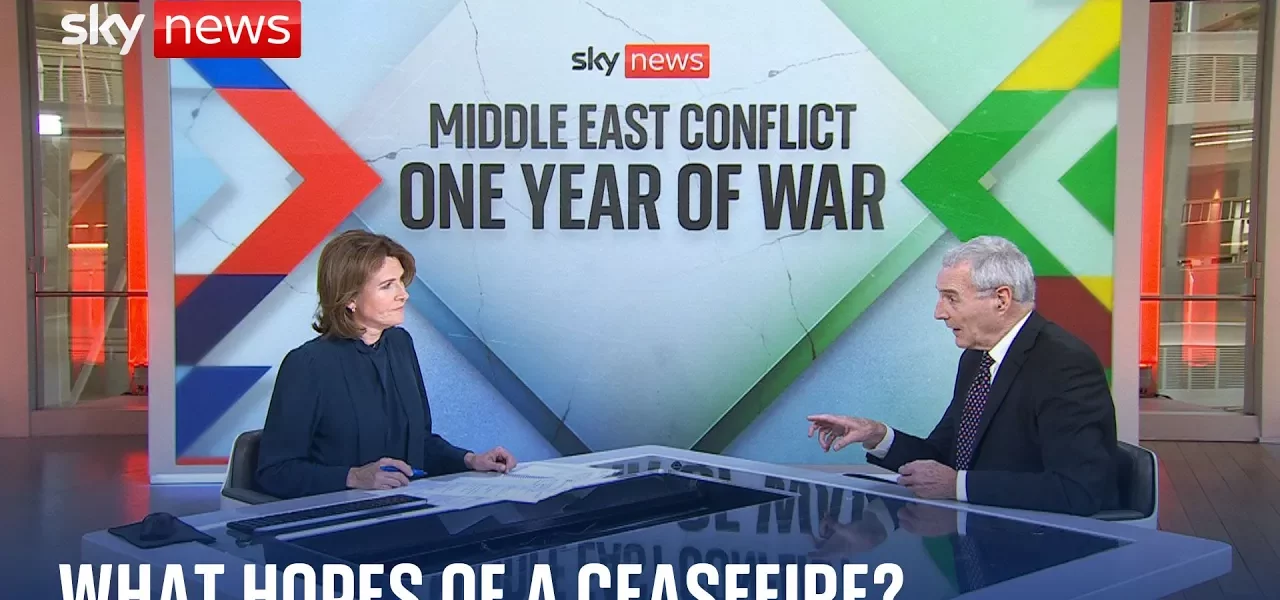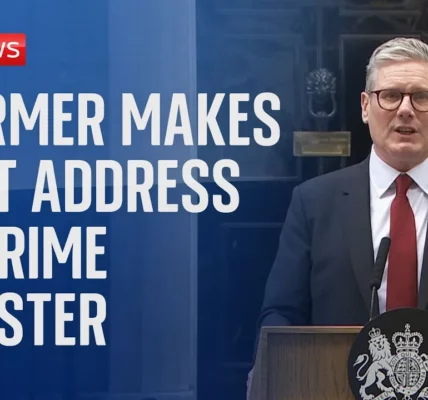The Rapidly Changing Geopolitical Landscape: Israel, Hamas, and Iran – Analysis with Michael Clark
The Rapidly Changing Geopolitical Landscape: Israel, Hamas, and Iran – Analysis with Michael Clark

Join us as we delve into a comprehensive analysis of the shifting dynamics in the Middle East, particularly focusing on the recent conflicts involving Israel, Hamas, and Iran as presented by defense and security analyst Michael Clark.
Introduction
In the world of warfare, events can unfold at a breathtaking pace, leading to rapid changes in geopolitical alliances and tensions. Over the past twelve months, the situation in the Middle East has evolved dramatically, particularly following the attack by Hamas on Israel on October 7th, which has triggered a complex web of retaliatory actions and strategic maneuvers. This article will explore the insights of Michael Clark, a prominent defense and security analyst, who provides a detailed reflection on the implications of these developments, the challenges faced by the involved parties, and the potential pathways for resolution.
The Immediate Aftermath of the October 7th Attack
The attack initiated by Hamas marked a significant turning point in regional dynamics. What were the immediate consequences of this action? Michael Clark elaborates on several key points:
- The initiation of a regional conflict that has drawn in various actors, particularly Iran.
- The strategic miscalculation by Hamas, as their actions have led to a wider confrontation.
- The shift in focus of Israeli military operations toward Hezbollah and Iranian interests.
The Role of Iran in the Current Conflict
Iran’s involvement in the conflict is pivotal. Following the escalation initiated by Hamas, Iran has found itself in a precarious position. Clark highlights several aspects of Iran’s current state:
Strategic Calculations
Iran has historically operated through low-risk proxies to exert influence in the region. However, the recent Israeli actions against these proxies have impacted Iran’s strategy significantly:
- Loss of influence among regional allies.
- Potential internal crises as domestic economic conditions worsen.
- Leadership challenges, with an aging leadership struggling to maintain control.
Regional Response and Consequences
As Iranian proxies face increased pressure from Israeli forces, the response from Iran has become critical:
- Iran’s strategy of bluffing and low-risk engagement is being exposed.
- The need for a coherent response to maintain its regional standing.
- Potential for increased domestic unrest as confidence in leadership wanes.
Israel’s Military Strategy and Challenges
Israel’s military response to the ongoing conflict has been aggressive, with operations extending beyond Gaza. Clark points out key considerations for Israel:
Short War vs. Long War Dilemma
Israel faces a significant challenge in its military operations:
- The inability to win a short war could lead to a protracted conflict.
- Economic capacity limits Israel’s ability to sustain long-term military engagements.
- Hubris may lead to overreach and strategic miscalculations.
Political Landscape and International Relations
The Israeli leadership’s relationship with the United States has also been strained. Key points include:
- Disagreements between Prime Minister Netanyahu and President Biden.
- The impact of U.S. domestic politics on foreign policy decisions.
- Challenges in maintaining a coherent strategy that garners international support.
The Impact on U.S. Foreign Policy
The United States has seen a decline in its influence over Middle Eastern events, as outlined by Clark:
Declining U.S. Power
U.S. involvement has diminished significantly, with implications for regional stability:
- Failure to contain the conflict within Gaza.
- The absence of a viable ‘day after’ plan for post-conflict scenarios.
- Perception of the U.S. as being sidelined in Middle Eastern affairs.
Potential Electoral Consequences
The implications for U.S. politics are significant:
- Potential backlash against the Biden administration in key swing states.
- Concerns regarding the Democratic Party’s stance on Middle Eastern conflicts.
- Impact of Netanyahu’s actions on U.S. domestic politics.
Conclusion
The past twelve months have been transformative for the Middle East, with ongoing conflicts reshaping the geopolitical landscape. Michael Clark’s insights reveal the intricate interplay between military actions, political maneuvering, and international relations. As we move forward, the resolution of these tensions will require a strategic reevaluation from all parties involved. The challenges are immense, but with a concerted effort towards diplomacy and collaboration, there may be pathways to peace. For those seeking more insights on this topic, we encourage you to explore our related articles on Middle Eastern geopolitics and international relations.
“`




